Project to remove invasive flax from Inaccessible Island
Invasive plant management on Inaccessible Island World Heritage Site
Report and photographs from Carmen Ferreira
With thanks to Tristan Government Environmental and Policy Officer Stephanie Martin
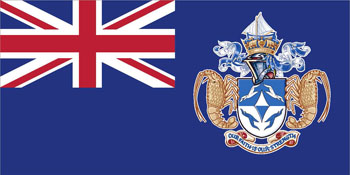 |
 |
I-Rigging Solutions (IRS), Royal Society for the Protection of Birds (RSPB) and Tristan da Cunha (TDC) Government have formed a partnership for an ambitious and challenging project to survey and remove New Zealand (NZ) Flax (Phormium tenax) from Tristan da Cunha's World Heritage Site of Inaccessible Island.
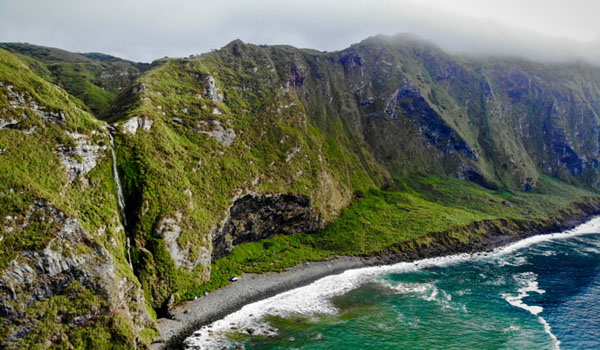
The Waterfall and Waterfall Beach, Inaccessible Island
Invasive and non-native species are one of the biggest threats facing any island's wildlife or biodiversity. Although NZ Flax is abundant and a useful non-native species on Tristan (where it is managed for shelter/windbreaks etc.) on remote uninhabited islands where it's left unchecked or unmanaged it can take over, becoming invasive and outcompeting rare and endemic flora.
The TDC Government Conservation Department and RSPB partnered with Carmen Ferreira (rope access and remote expedition logistics expert) to work on the challenging and exposed terrain of Inaccessible Island. The majority of the flax plant removal work takes place at heights of around 250 meters and working from ropes on the exposed island cliffs requires both experience and great skill. Remote expedition logistics, in which Carmen also has a wealth of experience, are equally critical to the outcome of a project of this nature. The remote location of Inaccessible Island together with the tricky landing access (especially in poor weather) force the flax removal team to be highly self-reliant in case the outside support and assistance from the TDC Conservation Department cannot be rendered.

Team members Brandon Cloete, Jan Bradley, Christiaan Gerber and Carmen Ferreira.
The highly skilled and disciplined flax removal team composed by Carmen this year consisted of Jan Bradley (who gained his considerable experience by working on Gough Island for several years), Brandon Cloete (Level 1 rope access technician and strong rock climber with a natural eye for photography) and TDC local resident Christiaan Gerber (currently the one island resident with a rope access qualification). Christiaan has been incorporated into the team to bolster the TDC local capacity in terms of rope skills.
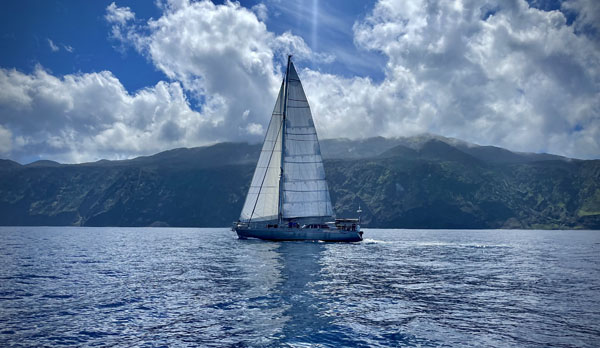
The sailing yacht Urchin off Tristan da Cunha in December 2021
The flax team arrived on Inaccessible Island by the sailing yacht Urchin, on 6th December 2021. Thankfully the weather was favourable, allowing the team to be safely transferred ashore with the help of the TDC Conservation Department. Base camp cargo was dropped off at Waterfall Beach whilst the team was dropped at Blenden Hall to allow the team to access the plateau of Inaccessible Island where an arduous and strength-sapping cross island hike with heavy backpacks was required to establish the team's so called 'satellite camp' at the top side of Waterfall Ridge.
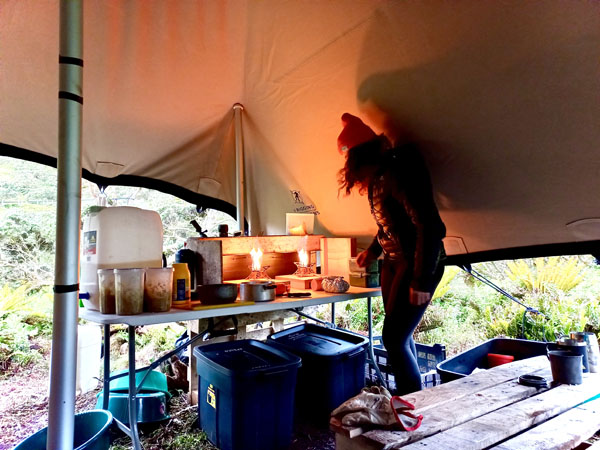
The Satellite Camp under canvas was located on the Inaccessible Island plateau at about 200m
at the top side of Waterfall Ridge.
It was with great relief on arrival at the plateau location that the team found the essential expedition supplies required for such an ambitious project in a very remote location in good condition, having been airdropped by the helicopter aboard the SA Agulhas II, 3 months previously. Now came the difficult but exciting task of establishing their camp and home for the next 3 months.
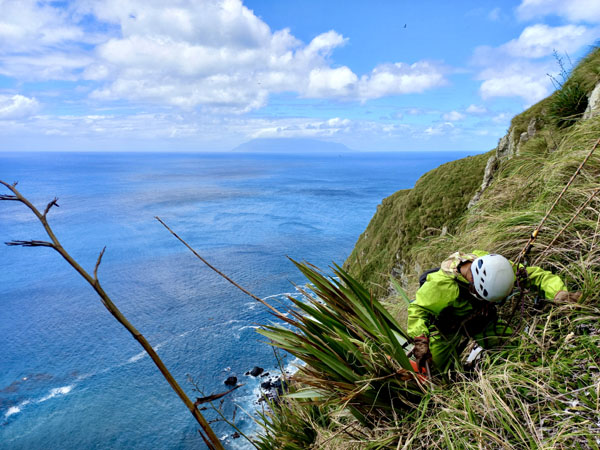
Nearing to top of a roped climb up the Waterfall cliffs with NZ Flax plant and spiked flower head visible,
as is the island of Tristan da Cunha in the background.
After being on Inaccessible for two weeks preparing camp, cutting tracks to work sites and organizing kit the team was finally ready to start the job they had come for, namely removing invasive NZ flax plants. For the next 3 months the team worked exhaustively, starting from one corner of Waterfall Ridge where according to previous surveys the flax plants are densest. Work was conducted from the top down, removing plants with hand tools whilst hanging on the rope. As a secondary measure the plant remains were sprayed with herbicide to inhibit regrowth in case any plant remains were still viable on the cliff side.
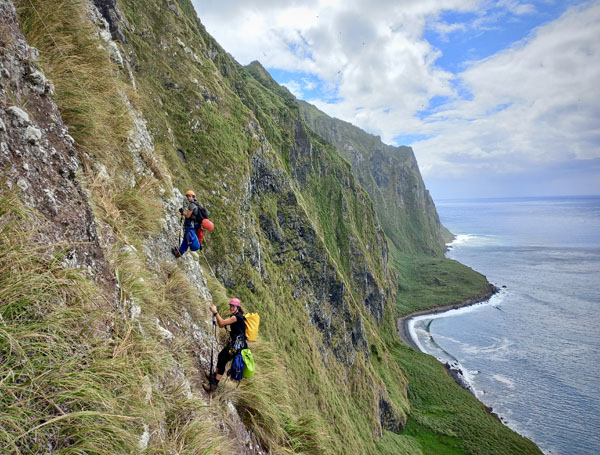
Climbing using ropes near The Waterfall on Inaccessble Island's Salt Beach beyond.
If ever there was a view to confirm why the island has this name - this is it!
The team's extremely hard work resulted in them clearing over 4,400 plants from the Inaccessible Island world heritage site during the 2021/22 season. Concurrent survey work done by the team reveals that there are still several thousand flax plants that will need to be removed in future work seasons as long as funding can be secured to fully restore Inaccessible Island.

